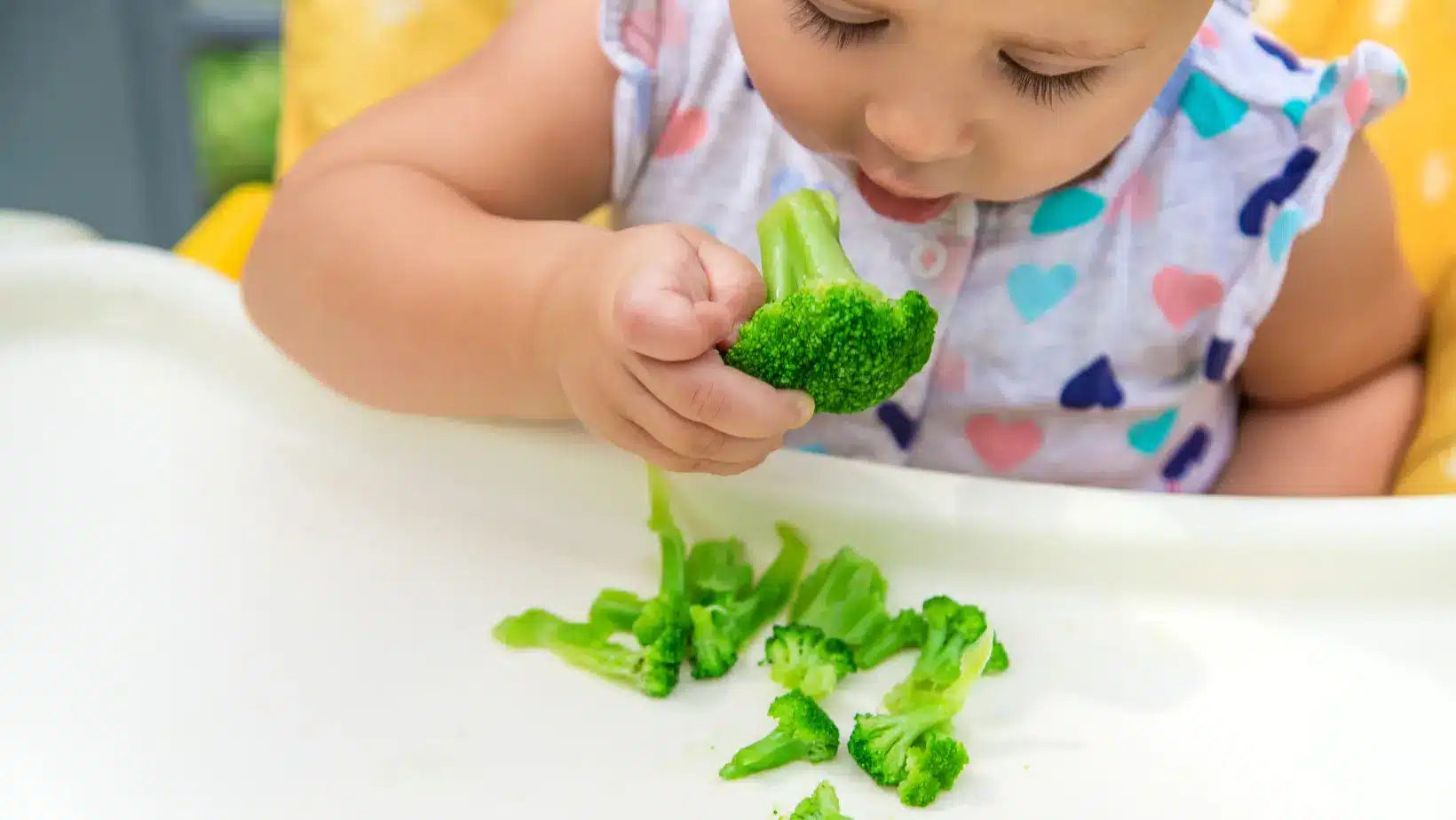To read the previous part, see The Reasons Stated by Parents to Start Baby-Led Weaning.
Article updated in January 2023.
The risks of baby-led weaning should be considered when deciding how to feed your baby.
Founded or unfounded, to be documented in the future:
- delays in the growth curve (weight and height);
- risk of choking;
- lack of iron sources (can provoke anemia), zinc and folates (B-12). Cereals enriched with iron aren’t eaten by hand and aren’t given as frequently to a baby in this approach. Health Canada recommends including iron sources during each meal;
- fruits and vegetables are often the first food introduced in BLW, which increases the risk of anemia;
- the food quality is lower since parents eat foods with more salt, sugar and fat;
- increase in the gag reflex and risk of choking (modification of the pharyngeal reflex during the first year of life for newborns), but by always respecting precautions this diminishes the risk.
The conclusions of the BLISS study seem to indicate that the ideal approach is to combine both food pieces and spoon-fed purée, as you can avoid many potential inconveniences of a BLW approach. With certain foods that aren’t solid, like baby cereals enriched with iron and yogurt (it also has added iron), you meet specific needs. You can also allow the baby to handle the spoon on their own. According to the 2022 update, it is not appropriate to perform BLW with a baby who has a lot of facial eczema, as the damaged skin could increase the impact of allergens.

- to avoid foods that are hard (pieces of apple, even if they’re often suggested in web forums, gum, candy, fresh vegetables, dried fruits, chewable vitamins), round or sticky (bread, marshmallows);
- that hard food is blanched before given to the baby. If we take a whole carrot, for example, it must be sufficiently heated so when parents bite it can easily crush it against their palate;
- to not forget foods rich in iron. Meats and poultry cooked in a crockpot sliced or balled, poached fish or homemade nuggets, tofu sticks or as a dip, legumes like hummus, eggs in an omelette or hard-boiled and cut. Other foods enriched with baby cereal with iron like crepes, waffles and cookies. You can give them avocado, bananas, potatoes and broccoli, but they don’t have iron. So why not roll a banana in baby cereal? The baby will get iron and eat by themselves;
- that the food surpasses the bottom and top of the baby’s hand when they hold it, in the form of strips or slices;
- that the baby is sitting properly in their chair;
- that the baby is always supervised, and those monitoring them must avoid distractions;
- to never place pieces of food in the baby’s mouth. Let them do it;
- to go progressively respecting the baby’s abilities, which will develop over time. Around 7 or 8 months, they will be able to pinch the food with three fingers. Around nine months, pinch it with two fingers. Add little pieces the size of a die, like a crushed blueberry. Around 12 months, their chewing is more effective, meaning you can offer crunchier solid foods like dry cereal;
- to vary the foods to get all food groups and different textures;
- to be ready to perform airway clearance techniques in case of choking.
Possible Inconveniences of BLW
When we use baby-led weaning, you have to be patient and vigilant because meals are often 50% longer. The baby will play with the food, crush it in their hands or throw it on the ground. You will wonder if they have eaten enough of everything and if they consumed enough nutrients for their development.
In conclusion, other research and experiments about BLW are ongoing, and I will update this information for you as scientific developments are released. Most health professionals are open-minded about baby-led weaning, but have specific reserves associated with the inconveniences for the baby over the medium- and long-term. Only through future research will we have additional data to understand the approach better. The ongoing BLISS study can undoubtedly lead to more information for our currently limited library of knowledge about BLW.
I hope this entry has taught you more about this approach.
Do you need more information? Please watch the video about Baby Led Weaning, or BLW (in french) filmed with the occupational therapist Catherine Cusson.
Marie
The Baby Expert


